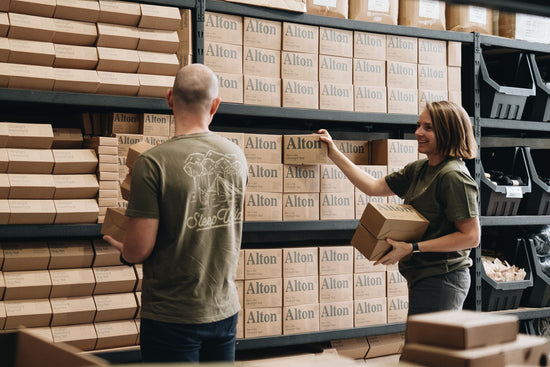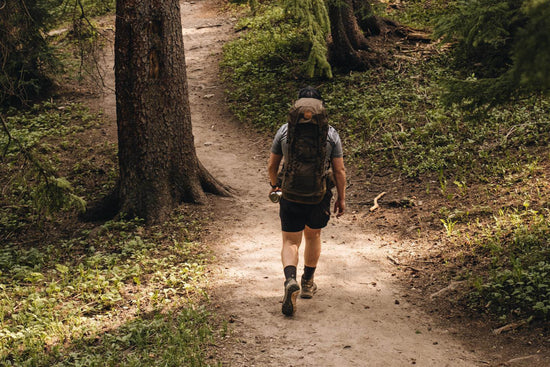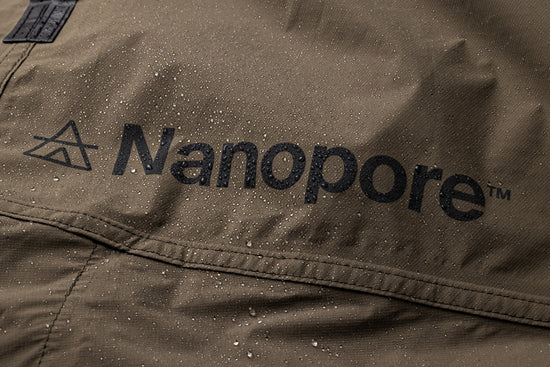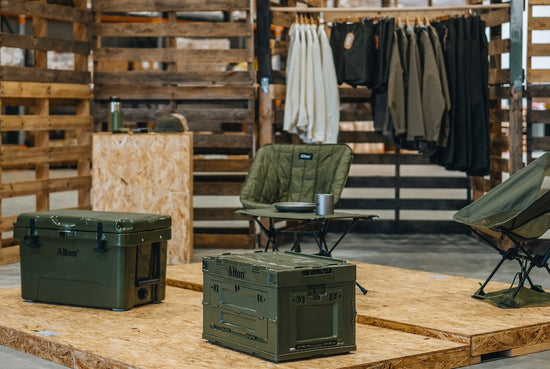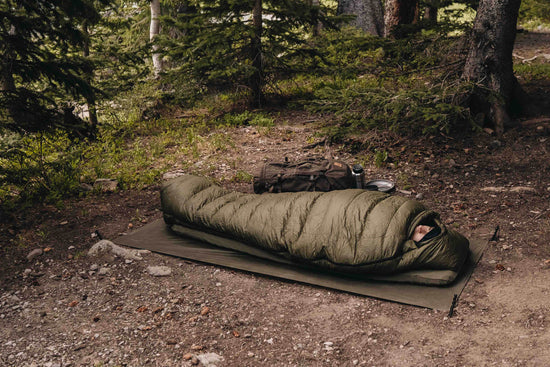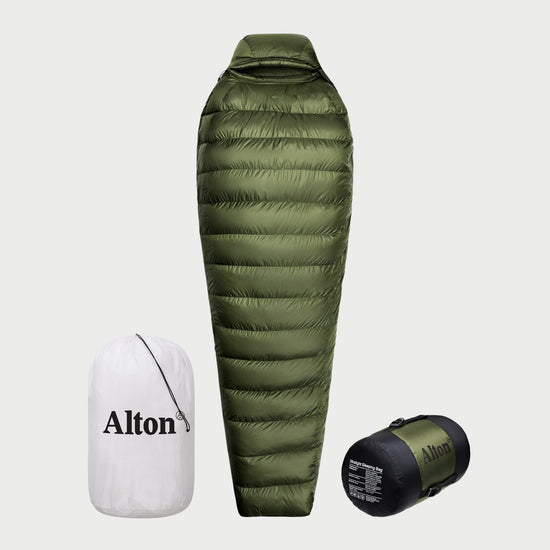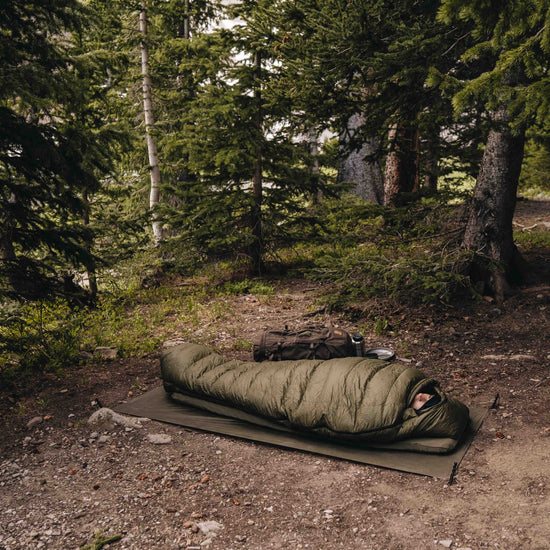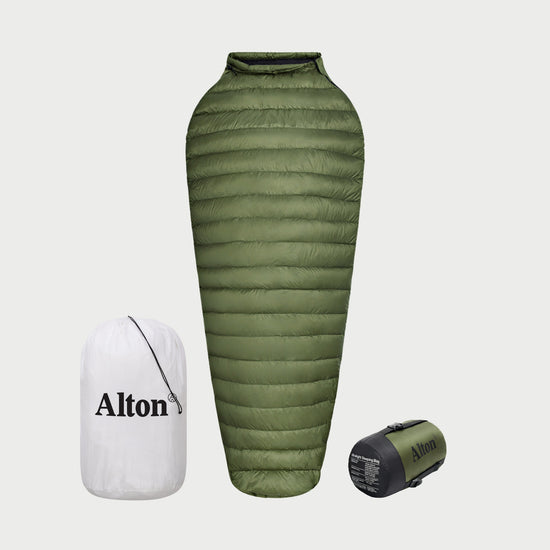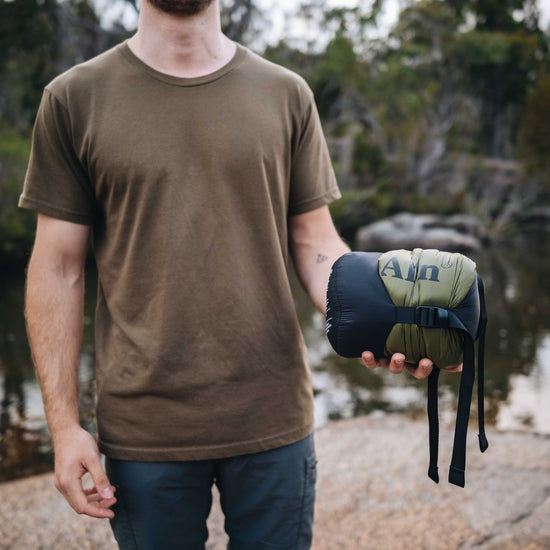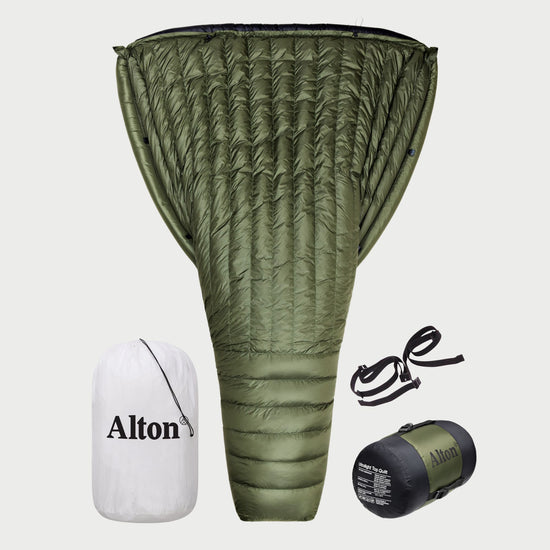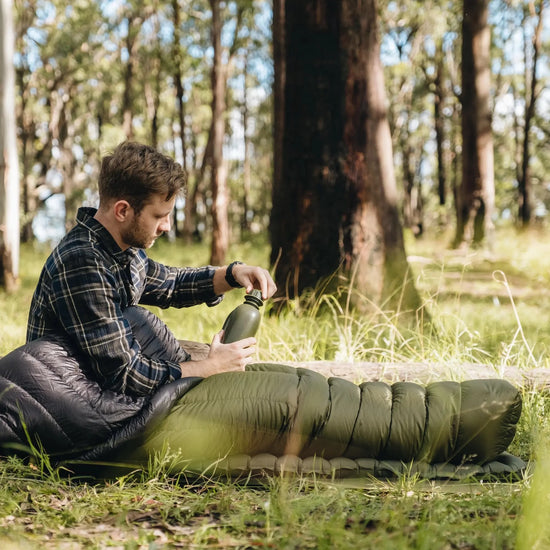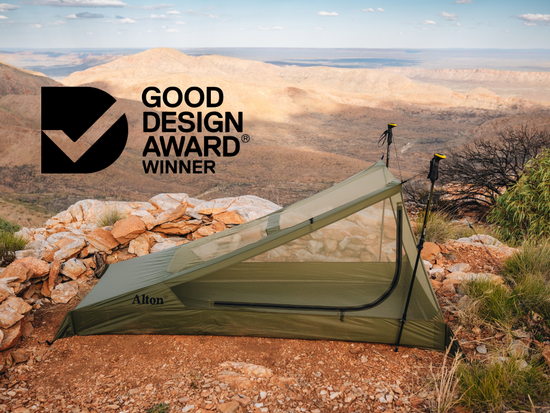If you’re shopping for a sleeping bag, one of the first things you look for is the warmth rating.
“I’ll be camping in overnight temperatures as low as 0ºC,” you think, “so this 0º sleeping bag will be warm enough. Right?”
Well, maybe…
Is that sleeping bag ISO 23537-1:2022 certified? Or, if not, does the brand provide any detail on how that warmth rating was tested? And did you check if that is a 0ºC comfort rating, or a lower limit? What about your own cold sensitivity; do you sleep cold or warm? And what’s your setup like, are you camping in a tent, or…? What about your sleeping mat?...
We could keep going, but you get the idea: sleeping bag warmth ratings might look simple, but it’s rarely that straightforward.
So to help you make sense of sleeping bag temperature ratings, we’ve put together this blog.
We’ll explain what the ISO 23537-1:2022 standard is, why it’s useful, its limitations, and how all of that impacts you when choosing a sleeping bag.
By the end of this blog, you’ll understand what sleeping bag warmth ratings actually tell you so that you can invest in the right sleeping bag for your needs.
Because nothing’s worse than spending a big chunk of your hard-earned money on a sleeping bag that’s not warm enough for the conditions you want to use it in.
What is ISO 23537-1:2022?
Despite what it sounds like, no, ISO 23537-1:2022 is not the name of some friendly robot on a sci-fi TV-show.
ISO 23537-1:2022 is an international standard that indicates a sleeping bag has been subjected to a very specific controlled test to determine its warmth.
In other words, all sleeping bags with an ISO 23537-1:2022 temperature rating have been tested in the exact same conditions, the exact same way. The test procedures, data collection methods, and calculation formulas were all identical.
Because of all that, ISO 23537-1:2022 makes it possible to say how warm one sleeping bag is compared to another with certainty, and gives you, the person using the sleeping bag, a solid understanding of the temperatures that sleeping bag will be effective in.
It’s worth noting that the ISO 23537-1:2022 replaced earlier versions of a similar test including EN 13537 and ISO 23537-1:2016 and is currently the most precise and consistent standard in the industry.
The discrepancies between these tests will be relatively small, usually within ±1°C to ±2°C. That means you can still be confident in the performance of sleeping bags that have been tested using these older standards, but we suggest going off the comfort rating, just in case.

How is ISO 23537-1:2022 tested?
The goal of ISO 23537-1:2022 is to test sleeping bag insulation by simulating real-world usage as closely as possible in a lab environment.
To do this, scientists use a thermal ‘human shaped’ mannequin.
Let’s call him Kaleb.
Kaleb is designed to mimic body heat output as closely as possible. His body has built-in temperature sensors that are carefully calibrated for the test so the scientists can determine the exact temperature and energy output required to maintain a certain level of warmth.
Kaleb is dressed in generic garments (thermals and socks), then he’s tucked inside the sleeping bag and placed on a foam mattress with an r-value of 4.85 inside a climate-controlled chamber.
Then they get to work freezing poor Kaleb to death.
As they subject Kaleb to different temperatures, the scientists are able to collect data from the sensors on his body, and the results are analysed to determine how well the sleeping bag retains warmth.
By the end of the test, they have enough data to calculate three temperature ratings:
Comfort
The comfort temperature rating is the lowest temperature at which the average person can lie in the sleeping bag in a ‘relaxed posture’ on their back and maintain ‘global thermal equilibrium’ (A.K.A they don’t feel cold anywhere).
Limit
The limit temperature rating is the lowest temperature at which the average person can lie in a curled position and retain enough warmth to not feel cold. This represents the lowest operational limit, not the ideal sleeping conditions. In other words, if you use the sleeping bag in temperatures below this, you will feel cold.
Extreme
The extreme temperature rating is, well, extreme. It’s also known as the survival rating, because this is hypothetically the lowest temperature that a person could use the sleeping bag and not die within minutes. Using your sleeping bag at this temperature would be a serious risk to your life, with a strong possibility of health damage from hypothermia or frostbite.
Why are ISO 23537-1:2022 ratings so important?
There is a lot of emphasis placed on ISO 23537-1:2022 certification in the industry, and for good reason.
Without it, it’s difficult to be sure of what warmth a sleeping bag will provide, and nearly impossible to make accurate comparisons between different brands or models.
The ISO 23537-1:2022 is the benchmark for determining sleeping bag warmth rating in the industry, and is used by most reputable brands. It gives you the assurance that you are getting the warmth rating you see on the label, and makes it possible to compare different options with a high degree of certainty.
What are the limitations of ISO 23537-1:2022 ratings?
ISO 23537-1:2022 is the most accurate, reliable means of assessing a sleeping bag’s warmth.
However, it’s worth stating the obvious:
ISO 23537-1:2022 is a standardised, lab-based test that measures how well one specific sleeping bag insulates a heated, human-shaped mannequin wearing base layers and socks, lying on a mattress in a climate controlled room.
That gives us a lot of useful information, but it cannot account for all the complexity of real-world usage scenarios.
As sleeping bag users, we need to understand the limitations of the test so that we can make an informed decision when choosing the best sleeping bag for our needs.
So here’s what ISO standardised test does NOT account for:
Individual Variation
The ISO test uses a mannequin that’s calibrated to reflect the heat output of a ‘standard’ 25 year old male. The results of this are then extrapolated out to reflect a ‘standard’ 25 year old female.
But ‘standard’ doesn’t exist outside of the lab. Individual variations in metabolism, age, gender, size, and body composition all impact how effective our bodies are at generating warmth and how sensitive each one of us are to the cold.
Then there’s the fact that most people don’t lie completely still in the same position all night long, like the ISO test’s thermal mannequin does. We toss, turn, and shift positions throughout the night, which can cause hot air to escape from the sleeping bag.
All of this means that to get the best sleeping bag for YOU, you need to consider your own physiology, cold sensitivity, and warmth preferences before making your choice.
Weather Conditions
The next biggest limitation of the ISO 23537-1:2022 test is that it doesn’t account for variable weather conditions. In the laboratory, factors like temperature, humidity, wind speed, and ground insulation are carefully monitored and controlled.
But real-world outdoor conditions are rarely stable, and all of them play a big part in the effectiveness of your sleeping bag.
Wind can cause you to lose heat rapidly, and can make the temperature feel several degrees colder than it is. Condensation and high humidity combined with cold conditions can speed up heat loss as moisture in the air wicks warmth away from your skin. Altitude and barometric pressure have been found to affect your metabolism, increasing energy expenditure. This can put extra strain on your body and make it harder to stay warm.
The ground or surface you sleep on also plays a huge part in how warm you feel. Wood planks (like you might find in a hut), dry leaf litter, and snow are insulators, so they can help you retain warmth. On the other hand, wet ground, compacted soil, and rocky slabs are conductors, meaning they draw warmth away from your body. This can put increased demand on your sleeping mat and sleeping bag and cause you to feel colder than you would on other surfaces.
And of course, when you go camping, it’s not just one of these weather conditions and environmental factors at play, but ALL of them, all the time, changing by hour and interacting in unpredictable ways. You need to be aware of that when you’re choosing your sleeping bag and plan accordingly.
Other Insulation & Warm Clothing
Your sleeping bag doesn’t work in isolation. Everything else you use along with it, including clothing, sleeping mat, and shelter type (and how many people you’re sharing that shelter with) all influence warmth.
If you wear multiple warm layers, share your tent with a hiking buddy, or use a sleeping mat with heat-reflective foil, you can effectively ‘add’ a little bit of warmth to your sleeping bag.
But if you sleep in the nude, don’t have an enclosed shelter, or sleep directly on the ground, you will find your sleeping bag isn’t as warm as you thought it would be.
The key here is to be realistic and do your homework on what other equipment you need in order to stay warm. That includes choosing an appropriate shelter for the conditions, bringing suitable warm clothing, and using a sleeping mat with a high enough r-value rating for the conditions.

How to make sure these limitations are not a liability?
The limitations of the ISO 23537-1:2022 are not a liability unless you let them be.
Think of ISO 23537-1:2022 as a map. It gives you the information you need, but it’s up to you to learn how to read it.
And if you don’t bother learning to do that, then you will probably end up lost.
The key takeaway here is that, when it comes to staying safe during your outdoor activities, nothing can replace the need for research, preparation, and experience.
And no rating system can perfectly predict how warm you’ll feel in a sleeping bag.
How to use ISO 23537-1:2022 sleeping bag warmth ratings.
1. Use ISO 23537-1:2022 ratings as a guideline, not a guarantee.
ISO 23537-1:2022 warmth ratings are not some kind of thermal lifetime guarantee that promises you'll always be warm down to this exact temperature, every single time, no matter what.
That’s just not how it works.
Remember, the ISO standard used controlled test conditions to provide us with a reliable means of comparing sleeping bags.
The key word there being controlled. No elevation, no wind, no unexpected rain storm. No fatigue, no calorie deficit, no circulation issues.
If you buy a 0ºC sleeping bag and feel chilly at 2ºC, that (usually) doesn’t mean the rating is wrong.
It means that your situation didn’t match the controlled conditions in the test. That’s not failure, that’s just the reality of using something in the field, instead of the lab.
This is why ISO 23537-1:2022 sleeping bag warmth ratings should be viewed as a guideline, not a guarantee. The more you can understand the test’s limitations (and your own), the better prepared you’ll be for real-world conditions.
2. Remember the lower limit does NOT equal ‘normal use’.
If you buy a sleeping bag with a 0ºC lower limit, then go ahead and regularly use it in 0ºC, then you’re asking for trouble.
The lower limit temperature rating isn’t intended to be the temperature you normally use that sleeping bag in. It represents the lowest temperature you can use that sleeping bag in before you begin to feel so cold that you struggle to sleep.
If you’re regularly using your sleeping bag right up to that lower limit temperature, you probably will notice the cold sometimes. This is because factors like wind, condensation/humidity, and ground chill put extra pressure on your sleeping bag insulation, not to mention things like fatigue, calorie intake, and hormonal changes can all cause you to feel colder.
So remember, the lower limit rating is right on the line where you start to be affected by the cold. Our advice is to choose a sleeping bag that has a comfort rating within the temperature range that you expect to actually use it in.
3. If you’re a cold sleeper, treat the comfort rating as your lower limit.
If you feel the cold more than others, have poor circulation, or struggle to get warm or stay at night, then you should treat the sleeping bag’s comfort rating as your lower limit.
A.k.a, that comfort rating isn’t actually going to be comfortable for you, and instead should be viewed as the lowest temperature at which you could use that sleeping bag before beginning to feel uncomfortably cold.
Note, most women’s specific sleeping bags do this already by displaying the comfort rating instead of the lower limit as their main advertised temperature. This is because women tend to be more sensitive to the cold than men due to a range of factors.
Regardless of your gender, if you are a cold sleeper, then our advice is to use the comfort rating as an indication of the lowest temperature that sleeping bag will be suitable for use in.
That means that when making your choice, you should opt for a sleeping bag that has a comfort rating that is at least 5ºC lower than the overnight temperature you expect to face.
For example, if you’re a cold sleeper who is camping in places with overnight lows of down to 5ºC, choose a sleeping bag with a comfort rating of at least 0ºC. This will help to ensure that you stay comfortably warm and don’t push your sleeping bag (and yourself) right to the edge.
4. If you’re really pushing the limits and doing something extreme, give yourself a BIG buffer.
In true wilderness environments where the weather can turn ugly at the drop of a hat, having a warm sleeping bag isn’t just about comfort, it’s about safety.
High mountains, exposed coastlines, windswept alpine plateaus… In these places, the temperature can plunge well below the forecast without warning, or in many cases there isn’t even a weather station that’s collecting accurate data for that specific area.
Add in extended periods of intense physical activity, which often result in accumulated fatigue and calorie deficits that are nearly impossible to make up for, and you’re looking at a situation where your body is going to struggle to regulate your temperature as effectively as it usually would.
In these situations, it’s vital that you choose a sleeping bag that gives you a big buffer against the cold, not just for your comfort, but as a safety precaution. To do this, we recommend choosing a sleeping bag that has a comfort rating at least 5ºC lower than the overnight lows you might encounter, and make sure that the rest of your sleep system is up to the conditions as well.

Our final thoughts on ISO 23537-1:2022 sleeping bag warmth ratings…
When it comes to choosing a sleeping bag, ISO 23537-1:2022 is the benchmark for sleeping bag warmth ratings, and for a good reason.
It gives us a clear, accurate metric for determining sleeping bag warmth that can be used to compare across brands and models. This helps ensure that users like you are safe and comfortable in their sleeping bags.
But remember, the ISO 23537-1:2022 certified warmth rating you see on a sleeping bag’s label can tell you how much warmth it can provide for the average person in ideal conditions, but only you can account for the full range of variables that will affect your warmth.
So do your research, consider your own needs and preferences, and make your decision accordingly.
